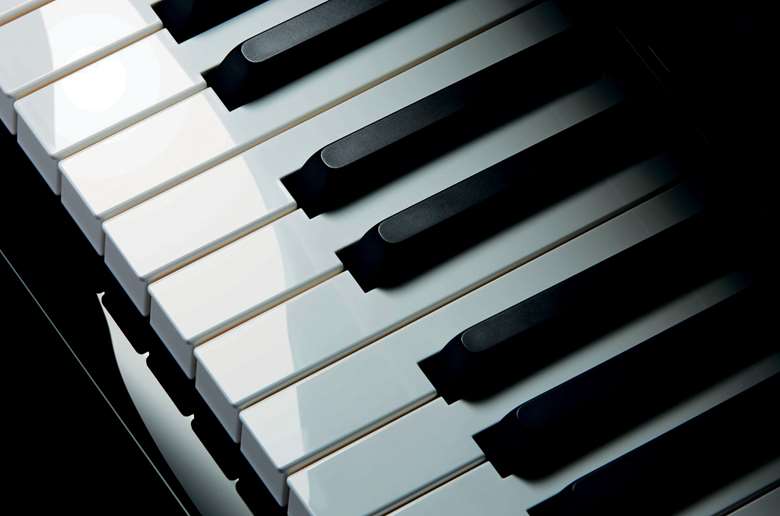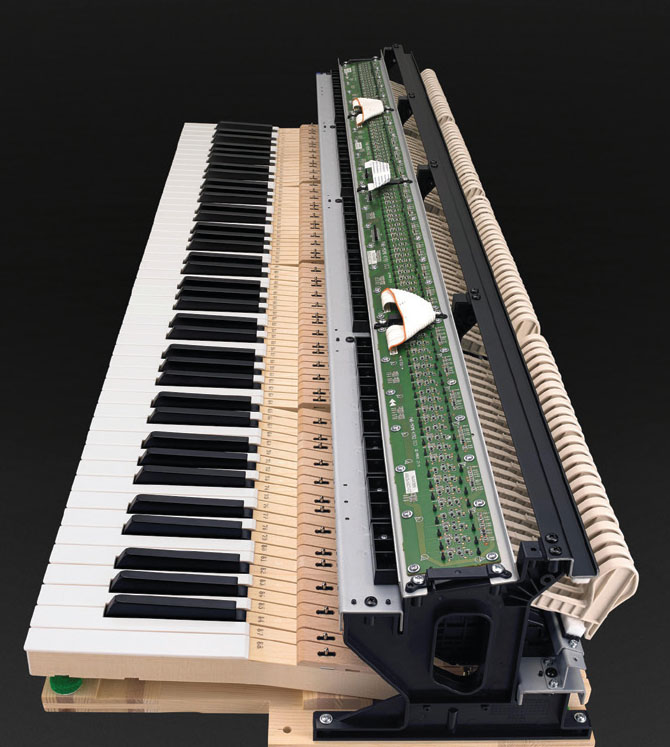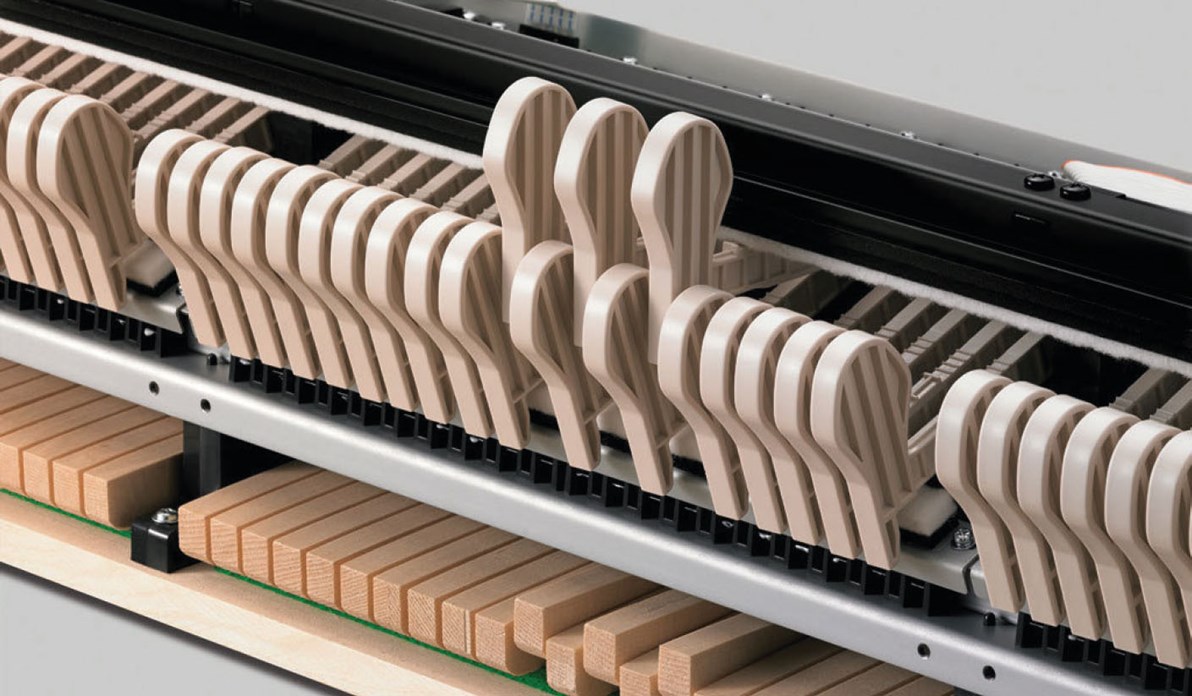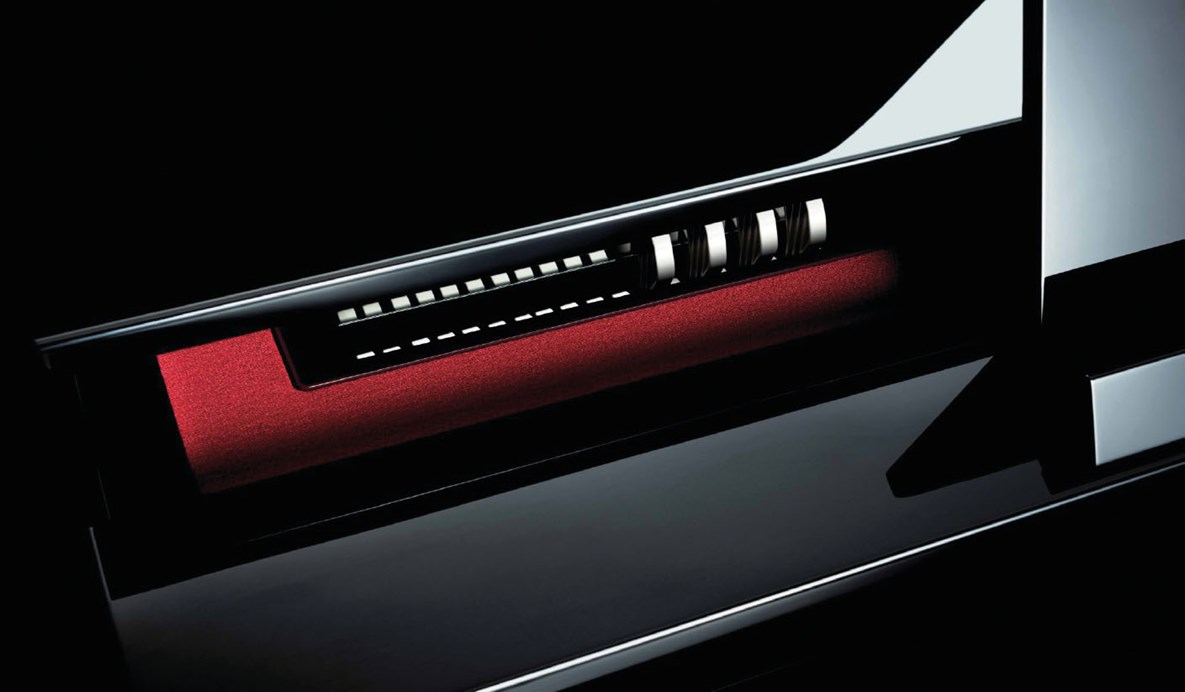Piano Reviews: Casio Celviano Grand Hybrid GP-500
Karen Marshall
Thursday, November 1, 2018
Can Casio's new hybrid piano impress a self-confessed acoustic lover? We sent intrepid piano teacher Karen Marshall to sample the GP-500, with surprising results…

I am a piano teacher who owns a Roland stage piano and two electric Yamaha pianos, as well as two acoustics – a Bentley upright and a Steinway grand. (And I must confess to preferring my acoustics.) I say this, as impressing me was going to be a tough one for Casio. I spent a morning at Banks Musicroom in York (thanks to the team there for their support) where I trialled the Casio Celviano Grand Hybrid model GP-500. My findings are summarised below.
The action
The real-hammer mechanism inside the instrument did make a considerable difference, as did the keys themselves, which felt just like an acoustic (they are wood). Designed in conjunction with renowned piano maker Bechstein, the repetition of the notes was brilliant – so important when playing ornaments. The instrument provided some resistance, which is helpful for developing finger strength and playing from the knuckles.
The sound
The three different sounds – ‘Berlin’, ‘Vienna’ and ‘Hamburg’ – were beautifully realistic, with a variety in bass and treble. They sounded just as as good as most uprights, and far better than many! One important test for me is damper resonance. Basically, if you silently hold down the keys, those strings still sound while others were played. This has been a significant weakness in the past for many electric pianos. Some repertoire was simply not possible on them – especially Impressionistic music. Some of my pupils have been unable to practise works like ‘Ghostly Conversations’ by Paul Harris, which feature silently depressed notes, purely because their electric pianos do not support this technique. The Casio Hybrid passes this test brilliantly: silently depressed notes sing on as others are played.
The additional 35 sounds – from cathedral organ to strings, electric guitar to harpsichord – were impressive. I think the position of the switch for this on a pad on the left was good, although it did take some time finding what I needed on the selector. (I'd prefer a selection of buttons over the keyboard for if I need to quickly change voice.) Volume is conveniently at the right-hand side. I must also mention the orchestral backing tracks from the music library. I can't say I have the ability to do it, but if you do you can play a full piano concerto if you want to. Having seen some of the Leeds Piano Competition this year, I did think of the young pianistic geniuses while listening to these backing tracks programmed into the instrument.

The piano key unit
Casio's GP-500 has a natural grand hammer mechanism
The face buttons allow for easy switching between sounds
Pedals and headphones
As mentioned in my summary (below) there are three pedals. All work extremely authentically, including the sostenuto pedal, which sustains just one note. The damper pedal has up to five different levels and includes half damping. This is very useful for higher-grade students. No quality of sound was lost using headphones, but I did need to slightly increase the brilliance setting to make it as satisfying to the ear as without the headphones. This feature is extremely helpful if you are in a property where sound is an issue.
Appearance
The finish is a polished ebony, and the piano has a well-positioned lid and music stand. Teachers may find the matte look on the lower models more practical for teaching. Overall, it's a neat design that doesn't look bulky in appearance; perfect for school music departments where space is at a premium.
If you want to know more about Casio Pianos, visit music.casio.co.uk
The Grand Hybrid range starts from £2,499 RRP. This is for the most basic model (there are three in the range). The review here was for the top-of-the-range model GP-500, which was on offer at the time with a whopping £1,000 off the £3,499 RRP in Banks Musicroom, York.
Key features
- Developed in collaboration with C. Bechstein.
- 88 full-length wooden keys, as found in an acoustic grand piano.
- Natural grand hammer action mechanism.
- Three European piano tones in one digital instrument, including a Bechstein D282 grand piano. The others I believe to be Steinway and Bösendorfer grands listed on the Casio Grand Pianos as Berlin, Vienna and Hamburg.
- 35 built-in tones, mainly keyboard instruments, such as organ, but also bass guitar and strings.
- Hall simulator with 12 different concert halls.
- Three pedals – Damper, sostenuto and soft (una corda). Half pedal available for the damper pedal.
Referral scheme
There is a free referral scheme that music teachers can sign up to. It's free to register and people referring customers to Casio can earn £150 for recommendations resulting in a sale. The person referred also receives £100 worth of Amazon vouchers. info.casio.co.uk/pianoteachernetwork

